The first buildings in the area where the Saski Palace was located were related to the starost's farm used for agricultural purposes. Its buildings were in the place where Stanisław Małachowski Square is now located. When, after 1611, Sigismund III Vasa made Warsaw his Residential City, it began to take over more and more political functions from Krakow. Its intensive development began. Therefore, the lands located close to the city began to be built. Such an area was also the one occupied by the farm.
In 1620, the Polish army suffered a great defeat at the Battle of Cecora, which caused panic in the Commonwealth. The threat of Turkish expansion has become real. That is why the king commissioned the construction of fortifications, a part of which ran through the northern part of today's Piłsudski Palace. On the other hand, the manor house of the Lublin castellan, Andrzej Firlej, was located in the western part of the square. However, it was destroyed during the Swedish Deluge.
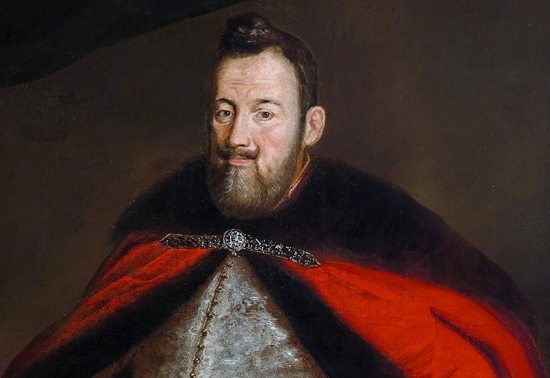
The first magnificent building located on today's Piłsudski Square was the palace for Jerzy Ossoliński, the Marshal of the Polish Parliament and Sandomierz voivode, built-in 1639-1642. It was a brick, two-story building built on a square plan. It housed the first passenger elevators in Warsaw. There is a garden behind the building. After Ossoliński's death, his daughter, Helena Tekla, looked after the palace. She was the wife of Aleksander Michał Lubomirski. Their son Józef Karol Lubomirski in the years 1681-1696 carried out a thorough renovation of the former Ossoliński Palace.
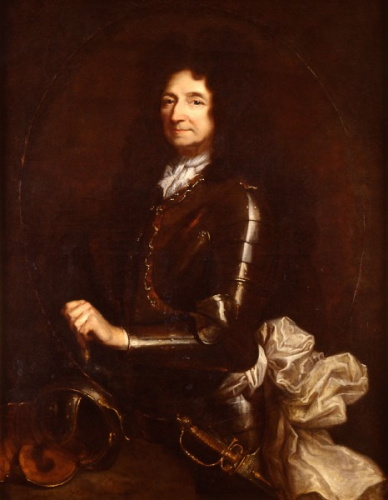
In 1661, King Jan Kazimierz granted the brothers Tobiasz and Jan Andrzej Morsztyns with land grants. Tobiasz received plots opposite the farm buildings and Jan Andrzej on the site of the ruins of the Firlej manor. Thus, the brothers received plots of land nearby. The brothers set to work quickly, because in 1664 their courts were already standing there. Tobias died in 1664, bequeathing the court to the Brothers of the Brothers, although his heir was his brother. It was after the death of Tobias that Jan Andrzej Morsztyn built a very impressive property consisting of the ground floor and the first floor. There was a representative hall upstairs, to which a monumental staircase led. The building must have made an impression on the inhabitants of Warsaw at that time since it was considered very beautiful. It was certainly one of the largest and most ornate palaces in the capital. Hetman Jan Sobieski himself was a guest there. Such a distinguished guest was received with a gala dinner, during which a comedy was staged. There was an art gallery in the palace, and Jan Andrzej Morsztyn created his greatest poetic works. When Morsztyn fell into disgrace and had to flee the country, his daughter and the wife of Kazimierz Ludwik Bieliński took care of the palace. In the years 1683-1712, the spouses expanded the residence of Morsztyn. Among other things, an additional floor was added.
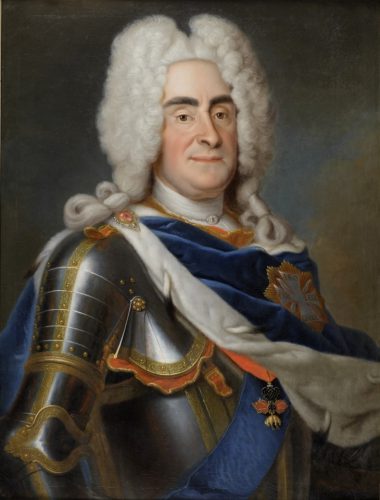
After the death of King Jan III Sobieski, the Saxon elector Frederick August I became the ruler of the Republic of Poland, in Poland, he was crowned in 1697 as August II the Strong.
August II, as the king of Poland and at the same time the elector of Saxony, had to divide his time between Warsaw and Dresden. Initially, he stayed at the Royal Castle. Full of appreciation for the reign of King Louis XIV of France and his construction, he also decided to erect magnificent palaces modeled on Versailles. Therefore, in 1709, he began building the Zwinger Palace in Dresden, which is one of the most stunning late Baroque buildings in Europe. The king decided to build a similar palace in Warsaw.
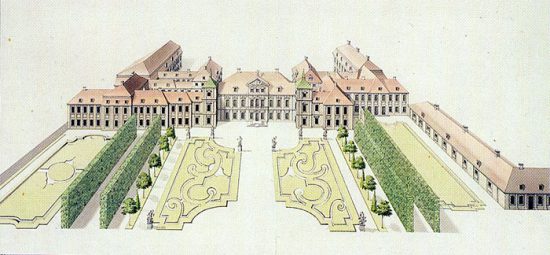
In 1713, August II bought a palace from Ludwika Maria née Morsztyn, which became his later residence. The Saxon Construction Office supervised the architectural plans. While the building itself corresponded to the king's intentions, its surroundings were not very representative. In addition, the plot on which the Morsztyn Palace was located did not allow for the construction of additional buildings intended for the service of the ruler and the court. That is why August II bought the neighboring properties, including the plot of another Morsztyn family. In this way, the former estate of this family was in Saxons' hands.
The first renovation works started right after the purchase, but they were not very intensive. Initially, wooden wings were added symmetrically on both sides of the former Morsztyn Palace. In addition, the king combined his residence with the Ossoliński Palace. The king officially moved into his palace on May 7, 1724. From then on, whenever he came to Warsaw, he usually stayed in the new palace, which with time began to be called the Saxon Palace.
The most representative and largest hall of the palace was on the first floor, there were also rooms where the king received audiences. All rooms were finished with the most expensive materials. For example, the largest ballroom was finished with a red and gold tassel. It is a wallpaper made of animal skins, richly decorated. Today, such finishes can be seen at the Wawel Royal Castle. Apart from the curdban, the rooms were decorated with gold, marble, silk, damask, and other precious materials. The palace had many elaborate decorations, for example above the windows and doors. There were also many paintings and tapestries in the residence.
Right behind the palace, there was a garden and barracks buildings. The area of the residence was closed by the Iron Gate. Its name is related to the grate which guarded the entrance to the Saxon estate in the gate.
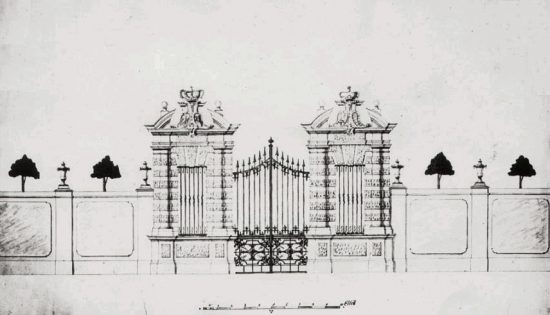
The royal garden was arranged in the French style, i.e. with a regular composition and carefully trimmed and shaped trees and shrubs. In 1727, the king agreed to make the garden available to all properly dressed Warsaw residents. Anyone who had the right clothes could enjoy the beauty of the Saxon garden through the Iron Gate. It was the first public park in Warsaw, which quickly became one of the most popular places in the capital.
The garden, however, was not only used for walks. There was a theater on its premises, with hedges behind the backstage and an earthen embankment behind the auditorium. August II, as a great lover of theater and opera, also arranged a theater in the manor, which was located on one of the plots he had purchased. He arranged the building for a theater at a considerable cost. He arranged it in Turkish style, which is why he bought oriental furniture and fabrics for it.
It quickly turned out that the first two theaters were below the ambitions of Augustus II. The king wanted a larger facility. Therefore, in 1724, a two-story building was added to the Saski Palace. There was a theater stage with several rows of benches upholstered in red fabric. In 1724, French plays and ballet were staged on the new stage.
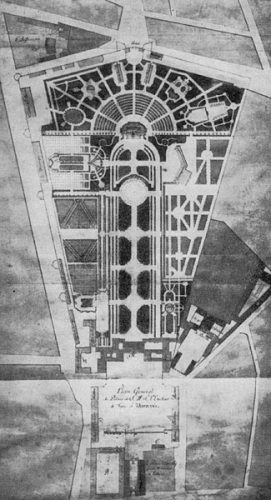
The architectural concept of the Saxon Axis is also connected with the purchase of land. It was the vision of the king, for which the following architects were responsible: Matthäus Daniel Pöppelmann, Joachim Daniel Jauch, J. Naumann, Z. Longuelune, and Jan Zygmunt Deybel. The 1,650-meter-long Axis began at Krakowskie Przedmieście and ended at the present Żelaznej Bramy Square. After numerous demolitions and construction works, the Axis, which had the shape of a pentagonal fan, was obtained. Its central point was the Saski Palace with a magnificent garden.
On Krakowskie Przedmieście there was the main entrance to the Axis, the beginning of which was a gate, behind which there was a square, which was used for parades and military drill exercises.
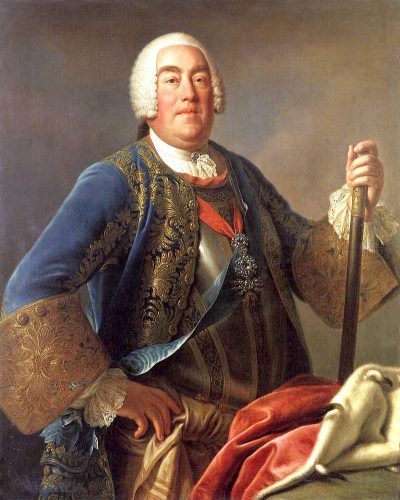
In January 1733, the king, exhausted and infected with gangrene, came from Dresden to Warsaw for the Polish Parliament meeting. However, he was not allowed to take part in it, because on February 1 he died in the Saski Palace. He was succeeded by his son August III Sas. During his thirty-year reign, he spent one-third of his time in Warsaw.
The new king continued his father's work and also extended the Saxon Palace. However, he did so for pragmatic reasons. As a father of fourteen children, he needed much more space for his family and court. Therefore, it became necessary to expand the Warsaw residence of the Saxons. More wings were added to the existing building. However, during the reign of Augustus III, the new rococo style became fashionable and the interior of the palace began to be arranged in his way. For example, the royal suite has been adorned with a tapestry depicting scenes from the life of Alexander the Great. The queen's apartment, on the other hand, has wooden paneling. Everything, both inside and outside, was extremely elaborate and made the Saski Palace one of the most beautiful residences in Europe.
During the reign of August III Sas, the appearance of the Garden also changed, to which the king ordered several dozen Rococo figures. Twenty-one of them has survived to this day.
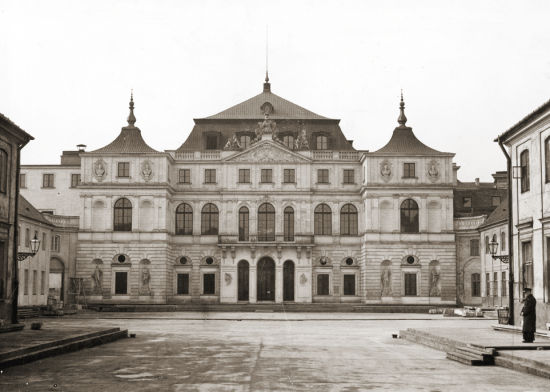
A significant modification of the Saxon Palace is related to Henry Brühl, who was the first minister of King August III. His power was enormous, as he dealt with most of the official matters for the king. While August III reigned, it was Brühl. Such a persona needed a palace worthy. Therefore, in July 1750, the minister purchased the Ossoliński Palace, which, after the annexation, was one of the wings of the Saski Palace. Due to the proximity to the king's quarters, Brühl was able to fully control everything that happened at the court of King August III Sas.
The minister started to renovate the building in the Rococo style. The area of the building was also increased, as an additional floor was added, and a balcony was added over the main entrance. After Brühl's death, his palace served as the Russian embassy, and in 1787 it was bought by the Polish-Lithuanian Commonwealth.
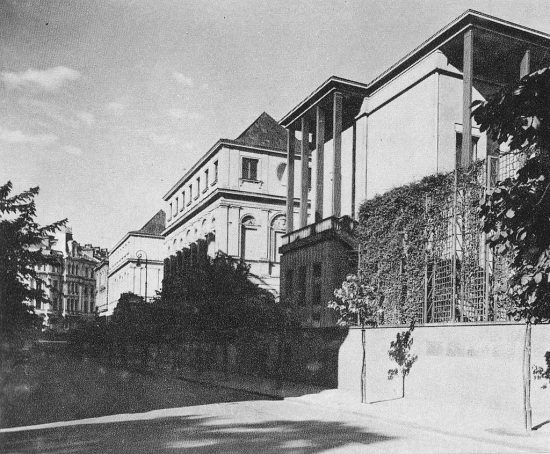
After the third partition of Poland, the Palace became the property of the Prussian government. At that time, the garden was destroyed and it began to be used for military exercises.
From 1804, the Royal Warsaw high-school, later known as the Warsaw Liceum, had its seat in the Saski Palace. According to the partitioner, the school was to educate new staff in the spirit of Prussian loyalty. Therefore, both the Prusai and Poles studied there. All according to the Prussian curriculum.
When Napoleon Bonaparte stopped in Warsaw in 1806. In the garden in front of the Saski Palace, he visited the troops stationed in the Polish capital. However, the emperor of the French took up residence at the Royal Castle. After the Napoleonic Wars, Warsaw was incorporated into the Russian empire. Then the Warsaw Lyceum was moved to the Kazimierzowski Palace.
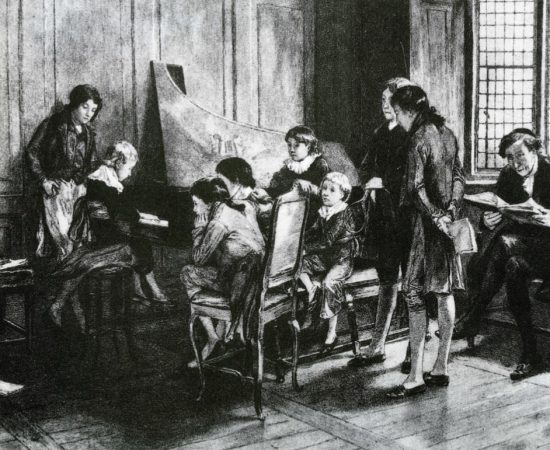
In 1810 the Chopin family moved from Żelazowa Wola to Warsaw, because Fryderyk's father received a job at the Warsaw Lyceum. Initially, the Chopins lived in a tenement house on Krakowskie Przedmieście, but soon they moved to a service apartment in the Saski Palace. His father, apart from working in a high school, ran a private boarding house for boys from gentry families. There, too, the young Fryderyk listened to his father's pupils playing the piano. Soon he began to study under the supervision of an outstanding teacher, Wojciech Żywny. At the Saski Palace, at the age of six, Chopin composed his first work, which in Warsaw made him famous as a genius child.
In 1817, the Saxon Palace and Garden were designated for military purposes. In the garden, Prince Konstanty Romanow, the commander-in-chief of the army of the Kingdom of Poland and acting as the military governor of the Kingdom of Poland, organized tiring drill shows. He punished soldiers and officers for the slightest mistakes. It was then that the Chopins moved to another wing of the Palace. While Duke Konstanty was cruel towards his subordinates, he behaved completely differently towards Chopin. He was just a fan of his talent. Already during his first performance in front of the prince, which took place at the Brühl Palace, Chopin gave an encore. At the special request of the governor, a carriage was sent many times to the Saski Palace to take Chopin to the Belweder Palace. There, he played for a few hours for Prince Konstanty.
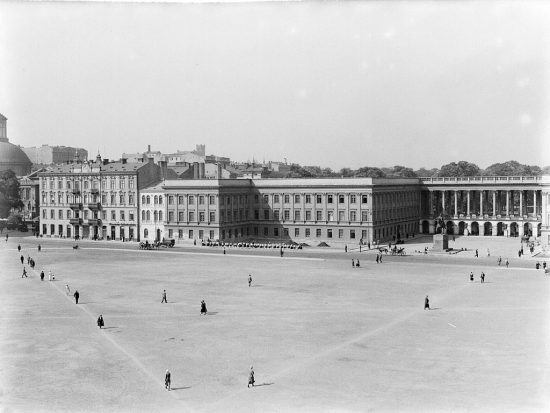
The first stock exchange in Poland inaugurated its activity in the Saski Palace in 1817. Currencies, promissory notes, and commodities were traded there. However, the popularity of the stock exchange meant that the rooms in the palace quickly became too cramped. Both brokers and players complained about the indecent working conditions. Therefore, after a few months, the stock exchange was moved to Marywil. Nevertheless, the beginnings of the stock exchange in Poland were inextricably linked with the Saski Palace.
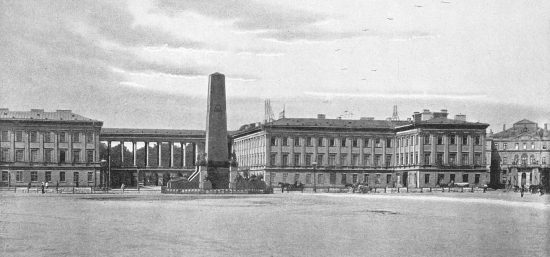
In 1837, the palace changed hands. It was a wealthy Russian merchant, Ivan Skwartsov, who purchased the devastated building at that time. He commissioned the reconstruction of the facility to be performed by a Polish engineer, Adam Idźkowski. In the years 1838-1842, he rebuilt the palace in the classical style, that is, in a style referring to the architectural forms of ancient Rome and Greece. During this period, the central part of the palace was demolished and a colonnade in the Corinthian order was added here. The construction of an openwork colonnade connected the square in front of the Saski Palace with the garden. In this form, the building lived to see independent Poland in 1918.
The changes also affected the Saski Garden. In 1847, the Institute of Mineral Waters was established on its premises, where you could take therapeutic baths and drink mineral water. After 1855, due to the opening of the first municipal water supply in Warsaw, an impressive fountain was built in the garden, which has survived to this day. Then the garden again became a Warsaw salon. The policemen made sure that there were no sloppily dressed or drunk people in it, as well as children under the age of 14. The unsuccessful attempt to assassinate the Russian governor Alexander Lüders is also connected with the Saski Garden.

At the end of the nineteenth century, the idea was born to create an Orthodox council on Saski Square, which was to implement Russian domination over Polish territory. Tsar Alexander III was an ardent supporter of this investment, arguing that the Orthodox inhabitants of Warsaw should have a dignified place for prayer. It was built in an eclectic style. Large quantities of precious stones, marble, and granite were used for the interior. Its construction was completed in 1912.
In free Poland, a discussion arose as to whether the council should be left behind. Many residents wanted it demolished, but there were also supporters of leaving it behind. Defenders of the temple praised its unique architecture. There was a proposal to transform the church into a Catholic church. The Polish government decided to dismantle the council in 1924.
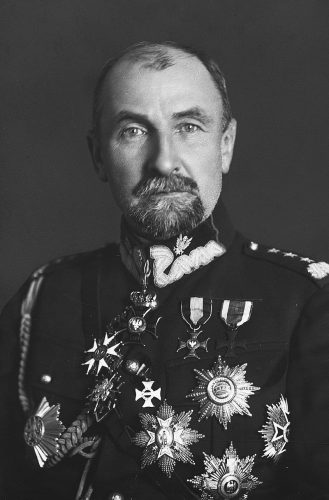
After Poland regained independence, in November 1918, the Saski Palace became the seat of the General Staff of the Polish Army. Its first chief of staff, General Tadeusz Rozwadowski.
The offices of the IV Information Department were also located in the buildings of the Saski Palace. he dealt with radio intelligence. The Cipher Section was responsible for listening to the radio and breaking the codes. Jan Kowalewski and other outstanding employees of Polish intelligence who managed to break Soviet codes worked in it. This was decisive for the success of the Battle of Warsaw and the entire Polish-Bolshevik war. The news of the Soviets' movements and intentions enabled General Rozwadowski to prepare plans that became the basis for victorious actions and the defeat of the Red Army.
After the victorious war, the commander-in-chief, Józef Piłsudski, became the chief of the General Command Department in 1922, which enabled him to occupy the official apartment in the Saski Palace with his family. He left them in 1923.
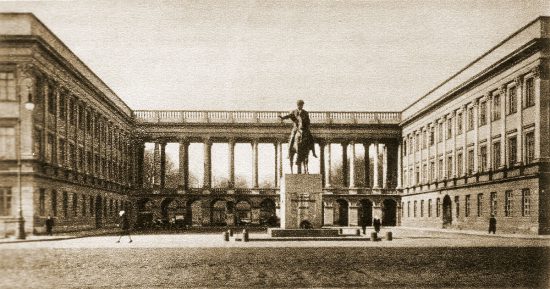
In 1923, a monument to Prince Józef Poniatowski was erected on the square in front of the Saski Palace. The author of the monument was an outstanding sculptor Bertel Thorvaldsen. The official unveiling of the monument took place on the 03 May 1923 in the presence of Polish President Stanisław Wojciechowski, Prime Minister Władysław Sikorski, French Marshal Ferdinand Foch, and Polish Marshal Józef Poniatowski. The monument was blown up by the Germans after the Warsaw Uprising in December 1944. Today, the monument stands in front of the Presidential Palace in Warsaw. It was recreated according to a model from the Thorvaldsen Museum in Copenhagen.
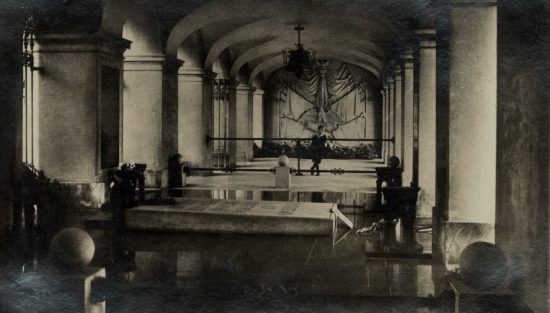
The precursors of the monuments to unknown soldiers were the French, who needed to honor the victims of World War I in such a way. This idea was also positively received in Poland.
At the request of President Wojciechowski, the Minister of Military Affairs, General Stanisław Szeptycki, by order No. 191, established the Provisional Organizing Committee for the construction of the Monument to the Unknown Soldier on November 30, 1923. General Tadeusz Rozwadowski became the chairman of the Committee. Next to him, the Committee was composed of, inter alia, gen. Józef Haller, gen. Władysław Sikorski, gen. Kazimierz Sosnkowski and as deputy chairman, gen. Lucjan Żeligowski.
After many discussions, it was decided that the Tomb of the Unknown Soldier in Warsaw would be erected on Saski Square, in the colonnade of the Saski Palace. The three central arcades of the Saski Palace colonnade were the essential part of the Tomb. There is a tomb in the middle. In it, on November 2, 1925, the body of an unknown Polish soldier, transferred from the chosen fate of the Lviv battlefield, was laid. In addition, a classicistic candle was placed at the tomb and a fresco with a laurel wreath on the vault above the tombstone. On the other hand, on the tombstone there is an inscription: "HERE LIEŻY POLISH SOLDIER FOLLOW FOR THE HOMELY". On the pillars, there are plaques with the names of the battles between 1914-1920. After the war, there were plaques related to the battles with Germany, and after 1990 with the battles in the history of Poland, starting with the Battle of Cedynia (972). Currently, the Tomb of the Unknown Soldier is only a fragment of the colonnade that survived the Second World War.
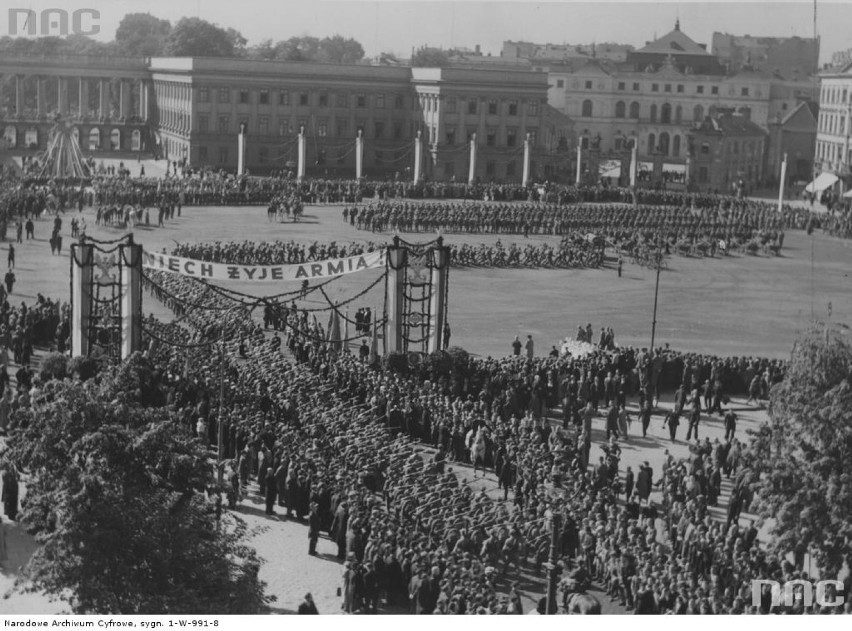
Within the framework of the General Staff, the II Intelligence Department operated, which in the scope of its activities had, inter alia, breaking codes. The greatest achievement of outstanding employees of the Department was breaking the German Enigma code. It was mainly done by Marian Rejewski, Jerzy Różycki and Henryk Zygalski. They began their work on breaking the Enigma in the premises of the Saski Palace in September 1932. Their work was top secret, and the group working to break the code was isolated from other employees. Nota bene, these activities turned out to be very effective, because knowledge about the success of Poles was not acquired by foreign interviews.
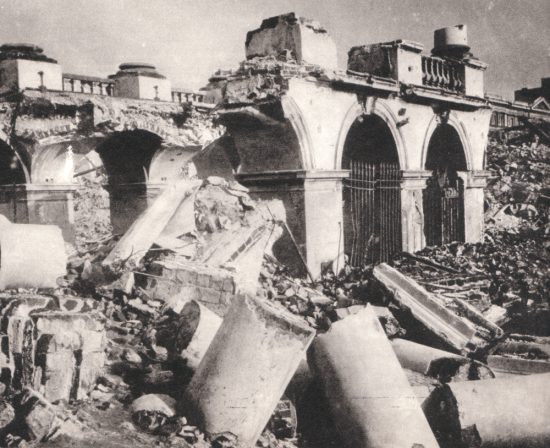
Just before the outbreak of World War II, in 1938, the façade of the Saski Palace was thoroughly renovated. After the capture of Warsaw by the Germans, the Wehrmacht took over the palace for its own needs. At the end of 1944, the Saski Palace, like many other valuable buildings, was blown up by the Germans. The only fragment that has survived is the Tomb of the Unknown Soldier, in front of which, numerous state ceremonies are held.
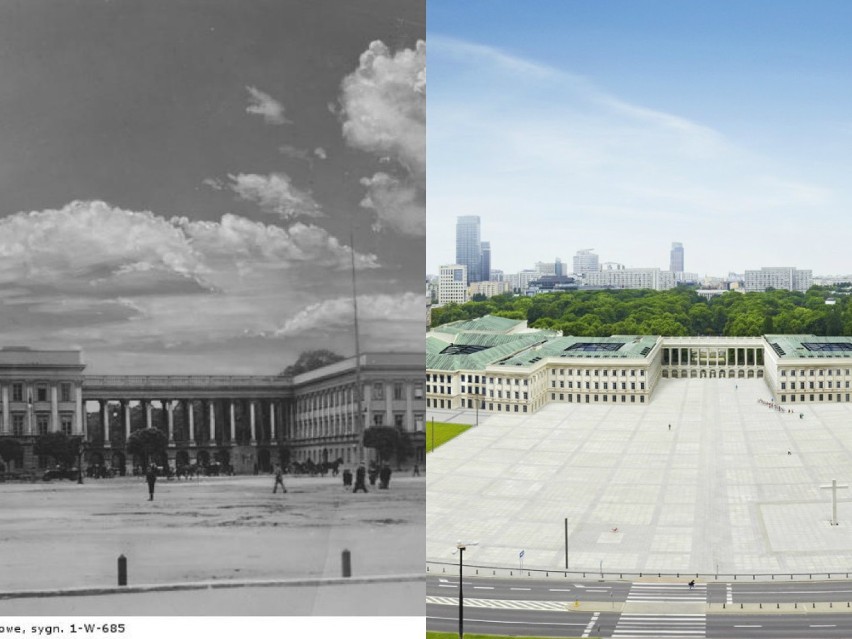
On November 11, 2018, during the celebration of the 100th anniversary of Poland regaining independence, Polish President Andrzej Duda signed a declaration on the restoration of the Saski Palace in Warsaw as a kind of monument to the 100th anniversary of independence. Act on the preparation and implementation of investments in the reconstruction of the Saski Palace, Brühl Palace, and tenement houses at Królewska Street in Warsaw
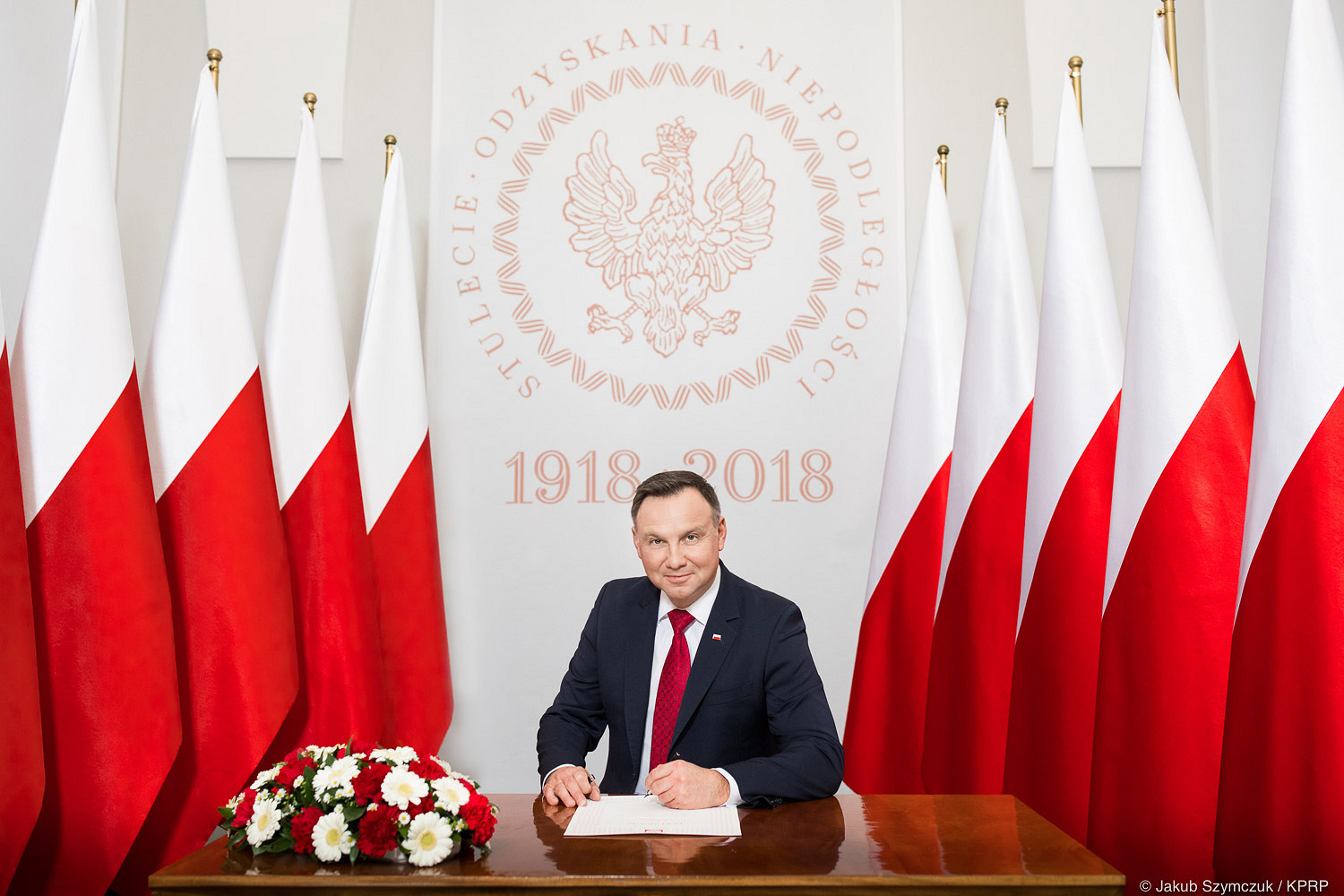
President Andrzej Duda signed an act on the reconstruction of the Saski Palace, Brühl Palace, and tenement houses at Królewska Street in Warsaw on the 15th of August 2021.
The reconstruction of the western frontage of Piłsudski Square will restore the splendor of one of the central places of the Polish capital. Saski Palace, Brühl Palace, and three tenement houses at ul. Królewska: with former addresses no. 6, 8, and 10/12, they were and will be a complement to the urban and architectural concept of the capital. Restitution of the facades and blocks of buildings from the interwar splendor, arranging the interiors, and allocating them for cultural, educational, and socially useful activities, will undoubtedly create a space open to everyone.
The reconstruction will start in 2023 and is planned to be completed in 2030.